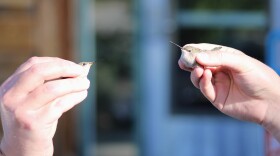-
Shorter days mean more nighttime driving — and across the Mountain West, that’s leading to a surge in collisions with wildlife.
-
As predators like grizzly bears and gray wolves expand their ranges or are being recovered to more habitats, wildlife managers in the Mountain West are increasingly tasked with preventing conflicts between the animals and people. Some are turning to new strategies and technologies, including drones.
-
The U.S. Fish and Wildlife Service incentive launched last year and is now expanding to more wildlife refuges.
-
Hummingbirds play important roles as pollinators, keeping flower populations diverse and they look pretty cool while doing it in their helicopter fashion. Out of the five hummingbird species, only one of them stays year-round.
-
-
On Monday, the Idaho State Department of Agriculture (ISDA) began treating several ponds in the Snake River with potash, which is used to exterminate quagga mussels.
-
Studies have shown that time in nature can increase mental health. In 2023, Idaho-born Professor Nils Peterson with North Carolina State University got curious about how wildlife activities affected people.
-
The new year marked an unwelcome milestone for Idaho as a second case of Chronic Wasting Disease was identified in the Gem State.
-
30 years ago a small group of wolves were reintroduced into the Idaho wilderness. Now, activists are looking back on that release and where wolves are today.
-
Chronic Wasting Disease is a fatal neurological disease affecting hoofed animals. Idaho just received its second case from a domestic elk that was not connected to the originally infected one. This concerns our hunting and agricultural economies as well as our health.

Play Live Radio
Next Up:
0:00
0:00
Available On Air Stations











